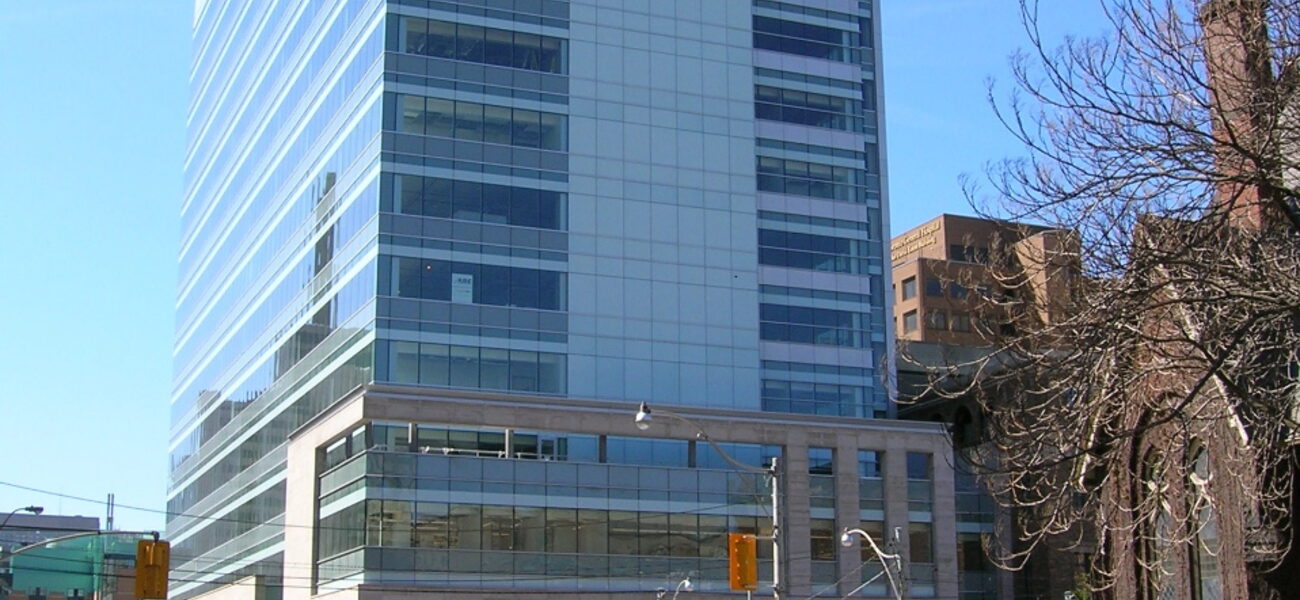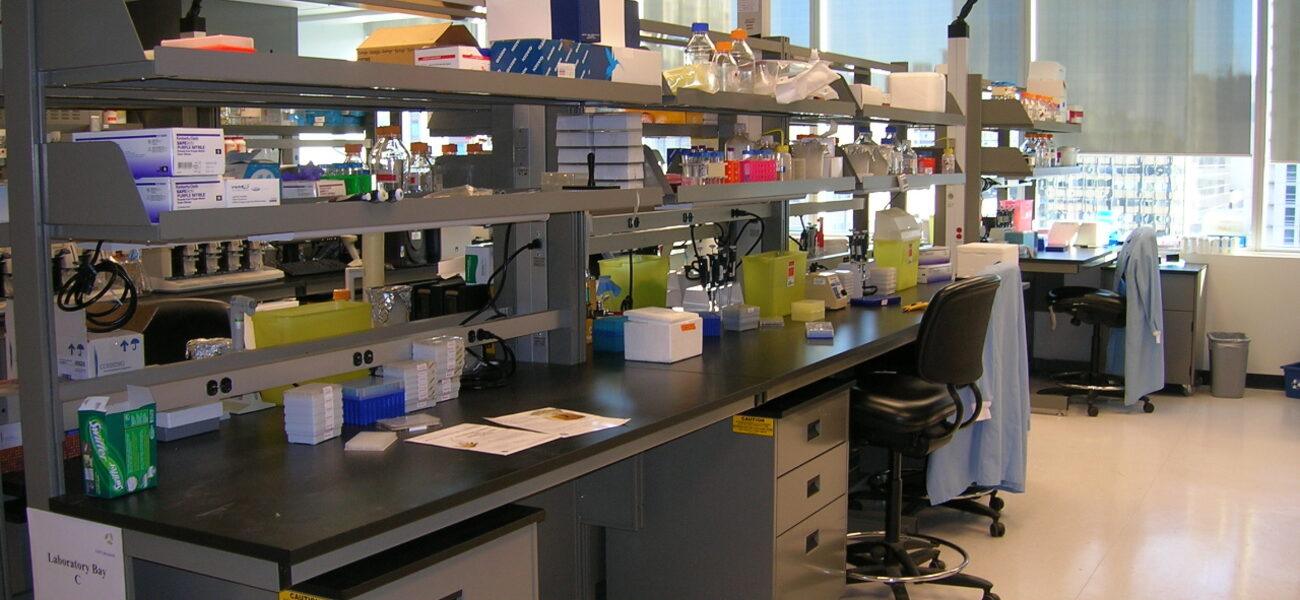Institutions that allow research strategy to drive their infrastructure will forge productive relationships with their primary investigators (PIs) from the start and yield better research results. The University Health Network (UHN) in Toronto, Canada, has successfully instituted procedures to take into account the financial and facility impact of potential research hires, which has positively impacted recruitment efforts and strengthened its research program.
UHN began to change its approach to recruitment in the early 2000s, in part because new researchers were being promised the moon, and the institution couldn’t always live up to the promises, says Ian McDermott, senior director of research facilities planning and safety at UHN. The problem is a common one at research institutions, he adds.
“Potential recruits think you are Santa Claus and you are not. The reality is you end up being Scrooge unless you turn around and you plan appropriately. It was not acceptable to hire people and then disappoint them.”
About University Health Network
UHN is the largest research hospital in Canada, larger than the majority of the country’s universities. The institution consists of five different research institutes at four different hospitals: Toronto General Hospital, the Toronto Western Hospital, the Princess Margaret Hospital, and the Toronto Rehab Institute. In total, 810,000 sf is dedicated solely to research. The 3,327 research staff members (650 research teams across five different areas) published 2,303 articles in 2012, and their funding was approximately $300 million.
“We are not small. So it was not easy to deal with these issues in this complicated environment,” notes McDermott.
A situation early in his career at UHN started McDermott on the path to integrating facility considerations into the recruitment process. The institution had hired a premiere surgeon and promised him a full research lab. After a few months of trying to accommodate the researcher’s needs, McDermott found that UHN could not do so, and within six months the researcher moved on.
“That is the most extreme example. But these things happen all the time. You bring people in, you promise them something, you expect a particular research return, and you can’t do it because you don’t have the right infrastructure.
“The strategy for research in your institution better drive the infrastructure,” he says.
Launching a Recruitment Plan with Facilities in Mind
For such a plan to be successful, first and foremost someone on the facilities side must find out who in the institution does the recruitment and become an integral part of the recruitment team, says McDermott.
“Do whatever you can to be part of that team. Then you need to take on that responsibility for the infrastructure.”
Generally, the facilities manager should take the lead. If the institution doesn’t have a facilities manager, someone familiar with the complexities of space management and development should assume this role.
“You need somebody to take the lead on the facilities side. Don’t wait for those who are driving the research strategy to come to you,” he says. “The reality is they don’t think that way. They think about the research. They don’t think about the infrastructure required.”
Keep in mind that infrastructure includes but is not limited to: laboratory space, office space, laboratory equipment, and IT equipment. The facilities manager also needs to ensure that core services have the capability of providing all the necessary support for PIs, and be prepared to manage the safety challenges inherent with various types of research.
“Have safety as part of your conversation early on, then you are not going to end up with surprises,” says McDermott.
It is important to know not only who is doing the hiring, but also who are the stakeholders in the process, he adds. This may include provosts, vice presidents, CFOs, and clinical leaders. No matter who they are, they must be educated on the importance of considering the facility impact, he says.
“Don’t assume they understand the impact; you have to get in front of them and explain it. It is not going to be easy, and it takes time to transition. They may believe they can hire a new investigator at a cost of $100,000, and it will take four weeks for the facilities side to get it done, but they may not understand the real financial impact. It is the facilities manager’s job to figure that out.”
Educate the stakeholders about the impact on relationships as well, and how building positive relationships affects the institution in the long run, adds McDermott. If you bring in a star researcher and right away have to say “no” to her requests, you are setting up a negative relationship from the start.
“Clearly show the impact of poor planning on the research, and not just the cost. They care about who got turned away. You need to show these stakeholders and the people who are making decisions that this is real.”
Building the Plan Step by Step
To successfully institute this hiring philosophy, it’s important to have an action plan. McDermott’s process includes these steps for each new hire:
- Determine how much space is required.
- Determine what equipment is necessary.
- Determine a budget for space and equipment.
- Create a documentation package that can be presented to the new potential recruit.
- Detail the tasks necessary to keep everyone safe and be compliant with regulatory requirements.
- Provide a schedule for implementing this project should the candidate accept the offer.
As part of the process, McDermott recommends meeting briefly with potential recruits to get a sense of their needs and wants. Based on this interview, put together a document outlining a simplified budget for equipment, a summary of space needs and safety tasks, any special considerations for the next three to five years (how many people does the researcher plan to hire, for example), and realistic timelines.
“Put a simple black and white package together, no more than about two pages. Nothing speaks louder than black and white numbers on a document you can email to the hiring team.”
McDermott prepares some information ahead of time to speed up this process. He has already calculated the typical space requirements for researchers in the Toronto area (approximately 150 sf per person), and keeps an inventory of quotations on the cost for basic equipment.
“The inventory list is intended for standard items. Most investigators come in with a piece you don’t have or never heard of, and you’ll have to do some research. But having this list and keeping it updated saves time.”
Achieving Success
McDermott believes the success of UHN’s integrated recruiting strategy is partly due to the makeup of his team, which includes safety and planning people, most of whom have research backgrounds. Being integrated into senior management, and being able to clearly show the impact of each hiring decision has also helped.
“We can talk to the scientists and the manufacturers, but we also have this second career in infrastructure development, design, and operations, so we can talk with the engineers, the facility managers, and the architects as well.”
McDermott has built up lots of contacts over the years, but he says institutions starting this process can build their own contacts by inviting suppliers and manufacturers to attend “lunch and learns.”
“Have lunch at your institution, and give them an hour or so to tell you about their products and what’s coming out. It’s a great way to build up your knowledge base and the relationship.”
The rewards are worth the effort and investment, he adds. The institution builds “fantastic” relationships with new PIs, so they in turn have successful research. Those PIs become the biggest supporters of the process and the institution.
“You are no longer Scrooge; you are, in fact, Santa Claus. And you get tremendous satisfaction out of being able to do your job successfully. It is really a win-win outcome.”
By Taitia Shelow
This report is based on a presentation McDermott made at Tradeline’s 2013 International Conference on Research Facilities.


